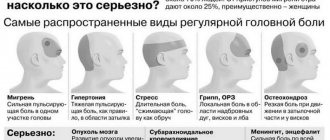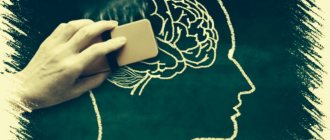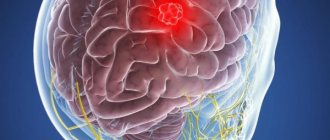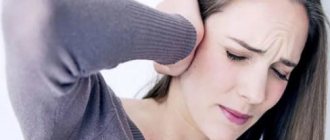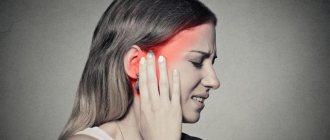Prosopalgia is a condition in which a person experiences headaches and pain in the face.
Seizures can be short-term or long-lasting and have different localizations. This condition may be a symptom of the development of a serious pathology. Therefore, at the first unpleasant signs, you should immediately consult a doctor.
Classification of facial pain
So, pain symptoms in the facial area occur against the background of various diseases. They can be the result of dysfunction of the nervous system, ENT organs, pathologies of the eyes, teeth, injuries, etc. First, you need to understand the classification of facial pain according to the mechanism of its development:
- somatalgia appears when the trigeminal, glossopharyngeal and laryngeal nerves are damaged. It is accompanied by severe paroxysmal pain in the jaw or other part of the head. Sometimes the half of the face in which the nerve ending is affected may hurt;
- sympathalgia. It is the result of disturbances in the functioning of the autonomic nervous system. In this case, unpleasant sensations in the facial area begin with the nerve trunks. This category includes migraine (attacks are accompanied by pain in the face, are long-lasting or short-term), direct damage to the nerve innervating a certain area of the face (for example, with neuralgia of the right ear ganglion, the patient has pain in the right side of the face);
- prosopalgia in mental illnesses (hysteria, depression, etc.);
- other types of pain syndromes. In this case, attacks are accompanied by lacrimation and redness of the skin, pain can be felt only on the right or left;
- problems with internal organs that can cause pain throughout the left side of the head.
Often, when nerve endings are damaged, a person’s skin hurts and pain is felt on the right side of the face (or left, depending on the location of the damaged nerve).
Pain often appears during purulent inflammatory processes on the skin (boils, ulcers, etc.). In addition to unpleasant sensations, a person’s general condition worsens and body temperature may rise.
Simultaneous pain in the head and face
When a patient complains that he has a headache in the temporal part and on the face, then in many situations this is associated with migraine.
This diagnosis has a specific feature. A person claims that a certain part of his face hurts.
Symptoms are observed only on one side of the head and rarely spread to the other.
Such discomfort can be described as strong, with a boring manifestation.
It is not able to continue for 1-2 days. Migraines are more common among females in the age range of 20-30 years.
In the future, the symptoms become weaker. In a situation where the right or left half of the face hurts, the main provoking factor will be an emerging cluster headache.
Situations are noted when the patient complains of difficulties with the eyes, at a time when painful discomfort simply radiates to the nerves of the visual organs.
Often males who have bad habits (excessive consumption of alcoholic beverages and constant smoking) come to a specialist with similar symptoms.
The doctor quickly identifies the signs by the mucous membrane of the eye, which is very watery and red.
If the patient complains of pain on the left or right side of the face (notes redness, burning sensation, headache), then this may indicate a hypertensive crisis.
In addition, there are sudden changes in pressure, nausea is felt, a gag reflex occurs, ringing in the ears occurs, the temples begin to pulsate and the heart hurts.
What are the main causes of facial pain?
So, first of all, pain in the facial area is associated with disorders of the following nature:
- damage to nerve endings;
- injuries or minor damage;
- skin diseases (acne, etc.);
- pathologies of the eyes or ears;
- various injuries to the bones of the skull;
- osteochondrosis of the cervical vertebrae;
- vascular disorders.
Let's look at each of the reasons in a little more detail.
There are a huge number of nerve endings on the human face; they can be affected by inflammatory processes, infections and nervous tension. In this case we are talking about neuralgic pain. There are several types of neuralgia:
- Maxillofacial nerve. Characterized by paroxysmal pain on the right or left (it is important to note that only one side of the face hurts), the affected area swells and redness of the skin appears.
- Nasociliary nerve. In this case, the pain is localized above the eyebrow and inside the eye. Over time, it spreads to the nose and a rash may appear.
- Pterygopalatine node. The patient develops swelling, and the process of secretion of saliva and tears on the side of the affected nerve increases.
- Glossopharyngeal nerve. Characterized by pain from the side of the nerve ending, the sensations become aggravated during chewing or talking.
Often, unpleasant symptoms occur when the jaw bite is disturbed (in this case, they intensify during the process of chewing food).
Another reason why the facial area hurts is migraine. The pain in this case continues for quite a long time, spreads to the entire head area, and can cause nausea or vomiting.
Facial migraine develops with trigeminal neuralgia. In this case, swelling may occur in the area of the carotid artery, and it becomes difficult to turn the head. Often this condition is caused by chronic inflammation (sinusitis, sinusitis, etc.).
Among skin diseases, it is worth highlighting various types of dermatitis, acne or acne. Often, facial pain occurs due to dental diseases. In this case, it is localized in a specific place.
If the patient has pain on the right side of the face, then inflammatory processes in the sinuses or nasopharynx can be assumed. Among the pathologies that provoke attacks are:
- sinusitis (the pain is prolonged, spreads to the cheeks and cheekbones, a runny nose does not go away for a long time, the mucous membrane swells greatly);
- frontal sinusitis (throbbing pain radiates to the forehead and nose);
- sinusitis (unpleasant sensations are localized in the frontal area, aggravated by tilting the head);
- otitis (in this case, pus accumulates in the ear, the pain radiates to the lower jaw and cheekbones).
Slader's syndrome is very common among ENT diseases. This is a pathological condition in which unpleasant sensations are observed in the nose, eyes and upper jaw.
This area is directly connected to the trigeminal nerve, so untimely treatment can cause inflammation. Often, pain in the face occurs due to previous injuries (jaw fracture, cut eyebrow or lip, etc.).
Traditional medicine in the fight against headaches
You can fight a headache, if it is not a separate serious disease, using traditional methods. These include:
- Taking herbal infusions and teas.
- Compresses with herbal infusions.
- Cool lotions.
- Yoga (helps psychologically if headaches occur due to stressful emotional overload).
But you can try and do all this only in cases where there is reliable diagnostic information that the headache is not associated with one of the above diseases.
First aid
As an emergency treatment for pain in the face, you can take an antispasmodic.
If this condition is caused by an injury, it is recommended to apply a cold compress to the injury site.
Further treatment depends on the cause of the attack (ENT diseases, neuralgia, dental problems, etc.). If severe pain in the face or head of unknown etiology occurs, you should immediately contact a specialist.
Diagnostics
First of all, the doctor will conduct an external examination and listen to all the patient’s complaints regarding pain.
Next, a detailed blood test will be prescribed. During the inflammatory process, the number of leukocytes will significantly exceed the norm. Mandatory studies include:
- radiography, which will help detect possible damage to the jaw, inflammatory processes in the sinuses, etc.;
- MRI and CT diagnostics are modern techniques that allow you to obtain a complete picture of the patient’s disease (damage to various nerve endings, the presence of tumors, etc.).
If the patient has pain on the left side of the head, then it is necessary to undergo an examination by an ophthalmologist and an ENT specialist; they can identify pathologies of the organs of vision, smell and hearing.
If your tooth hurts, you need to see a dentist who will solve this problem. For mental disorders, consultation with a psychiatrist will help.
Concentration of symptoms on the left side
Pain in the temples can appear on any part of the head. This applies to the back of the head, forehead, temples, and areas near the eyes.
According to the type of manifestations, painful sensations can be acute and aching in nature, a burning sensation or pulsation is observed.
Most people think that this is unlikely, that only the side of the face hurts, however, this is not uncommon.
As mentioned earlier, the main provoking factor in the occurrence of pain on the left side of the head is considered to be migraine.
It can cover areas near the eyes, temples, the left side of the forehead or jaw.
For example, even before the onset of migraine, the patient observes the following symptoms: the eye begins to flicker, spots appear, and “floaters” appear.
During a migraine, the head or skin of the face often hurts; it can swell and become extremely sensitive.
At the end of the attack, the patient feels drowsiness, lethargy and increased fatigue.
There are a significant number of people who suffer from sensitivity to weather conditions.
Manifestations include a sharp spasm, pressing discomfort or painful sensations in the temporal part on the left, near the ear, forehead or back of the head.
Similar symptoms appear 3-5 hours before precipitation, significant warming or cooling.
Changing climatic conditions affects blood and intracranial pressure in a certain number of people.
Additional signs, in addition to the above, are fractures in the teeth or jaw, pain in specific points near the eyes, in the neck.
When an infection appears inside the body, the patient complains of drilling, pulling pain in the left side of the head and face.
This condition can be provoked by caries that gets into the nerve endings of the teeth, or a cold ear, from which discomfort is transmitted to the occipital or temporal part.
Treatment
To select the optimal therapy, you first need to understand the reasons that cause the pain attack.
After receiving the diagnostic results, the doctor will prescribe medications, physiotherapeutic procedures, etc. When half of the face hurts due to injury or migraine, it is recommended to take a painkiller.
However, in this case, you cannot self-medicate for a long time, since medications only relieve pain, but do not treat the underlying cause. You can apply a cool compress, which will relieve the condition until the ambulance arrives.
If the cause is neurological disorders, then a neurologist treats the pain. In case of inflammation in the trigeminal nerve, anticonvulsants are prescribed.
The same medications are prescribed for chronic neurological diseases (in this case, drug therapy is used only during exacerbation).
It is also recommended to take non-steroidal anti-inflammatory drugs. If the disease is caused by bacteria, then antibiotics are used in parallel.
For dental problems (caries, inflammation of the gums or tooth roots), complex treatment is carried out. It includes filling the damaged area, periodontal therapy, or complete tooth extraction.
Various creams or ointments are used to treat skin diseases. In the presence of abscesses (boils, carbuncles, etc.), surgical intervention is performed followed by antibiotic therapy.
If half of the face hurts due to inflammation of the ENT organs, then antibiotics and rinsing the sinuses with sea water are prescribed. As a last resort, they resort to surgical intervention (for purulent otitis, etc.).
Features of treatment of individual forms
It is important to remember that if the disease is not cured at the acute stage, then the likelihood of becoming chronic is very high. In this case, when exposed to negative factors, the symptoms will worsen and then subside.
For cervical osteochondrosis, therapeutic exercises are performed, chondroprotectors are prescribed, and in rare cases, surgical intervention is indicated.
If there is a tumor that pinches the nerve endings, which causes pain in the face, a biopsy must be taken.
If its malignancy is confirmed, surgical removal is performed followed by chemotherapy or radiation therapy.
It is very important to consult a doctor in time to cure the disease at an early stage, otherwise the risk of metastases spreading to other organs and systems increases.
If the cause of pain is mental disorders (various forms of hysteria, depression, etc.), then consultation with a psychiatrist and long-term use of antidepressants will be required.
To prevent relapse, the patient will be constantly monitored by a specialist. For eye pathologies (conjunctivitis, damage to nerve endings, problems with the lens or the presence of tumors), therapy is carried out depending on the nature of the pathology.
Doctors often prescribe various physiotherapeutic procedures, their type depends on the disease. This could be therapeutic massage, electrophoresis, ultrasound, acupuncture, etc.
Among folk remedies, aromatherapy can be distinguished. Proper nutrition and a healthy lifestyle will have a positive impact.
It must be remembered that self-medication often leads to the development of serious complications that are difficult to respond to conservative methods of therapy.
Other reasons and tactics of action
Let's take a closer look at what other reasons can cause such unpleasant and painful sensations:
- The floor of the face can hurt due to such serious pathologies as complications such as sinusitis, stroke, malignant neoplasm - self-medication in these cases is absolutely prohibited. Only carrying out adequate diagnostic and therapeutic measures helps eliminate unpleasant sensations.
- If your head hurts due to a history of skull injuries, you also cannot do without the help of a specialist: courses of medications that improve blood circulation, conduction of impulses through the nervous structures, and physical therapy help to improve your well-being many times over.
- Weather sensitivity can unsettle everyone - the female part of the population, the male part, and even children can react strongly to weather changes. Sharp spasms in the blood vessels lead to disruption of adequate blood supply to the brain tissues, intracranial pressure increases, and both the right and left half of the head hurts, especially in the eye area.
- Among the pathologies that are difficult to diagnose, cluster pain can be identified - characterized by the sudden appearance of pain impulses in the area of the orbit and temples. The intensity is so pronounced that the person is unable to perform work duties. Cephalgia affects one half of the skull, the eye may move forward somewhat, change color, increased lacrimation and nasal congestion develop. Treatment is selected by a neurologist.
- Sharp or aching pain in one part of the head may be a sign of glaucoma. Intensifies in the dark, a blurry halo may appear around the object in question. The treatment is carried out by an ophthalmologist. In severe cases, surgery may be required.
